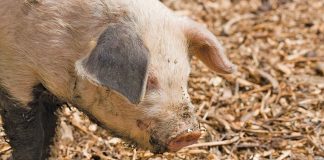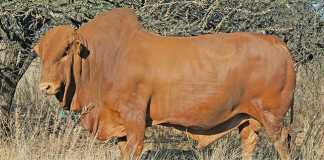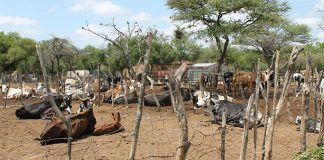Inbreeding is the mating of animals that are more closely related than the average animals in a breed. In this way, the proportion of homozygous (identical) gene pairs is increased and the proportion of heterozygous (different) gene pairs is decreased. Homozygous gene pairs would be desirable if the gene the animal received from each parent led to superior performance and increased profit. However, most animals carry undesirable genes that remain hidden, unless the animal is homozygous for that specific gene.
Because an inbred animal is more likely to be homozygous for any gene, it is more likely to express undesirable genes and, hence, undesirable traits.
Inbreeding depression
Inbreeding doesn’t create undesirable recessive genes, but it does bring unfavourable genes to light. This leads to ‘inbreeding depression’, or a decline in average performance.Inbreeding depression has the greatest effect on traits associated with fitness and traits with low heritability, such as reproduction and calf survival, maternal ability, growth rate and cow productivity. Inbreeding thus has serious negative effects on overall animal performance and profitability.
In a 1993 study, it was found that, in Australian beef cattle, a 1% increase in inbreeding resulted in an increase of one day in the calving interval, while 2% fewer calves were weaned on average. For each 1% increase in inbreeding, weaning weight decreased by 0,4kg. Each 1% increase in the inbreeding of cows resulted in a further 0,3kg reduction in the weaning weight of their calves, mainly due to lower milk production. There’s scientific evidence that the rate of inbreeding is more important than the absolute value of inbreeding.
Where the rate of inbreeding increases slowly, strict selection criteria and breedingculling can be used to eliminate undesirable types and poor producers. Keep inbreeding at a fairly low level by avoiding the mating of brothers with sisters or parents with their offspring.
Co-efficient
The inbreeding co-efficient measures the percentage increase in homozygous gene pairs in an individual relative to the average of the population from which the individual came. If an animal has an inbreeding co-efficient of 0,25, it is expected to have 25% more homozygous gene pairs than a non-inbred animal from the same population. The inbreeding co-efficient for a trait can have any value between 0 (non-inbred) and 1 (100% inbred). A full brother X sister mating will result in an inbreeding co-efficient of 25%, as will a father X daughter mating. A half-brother X sister will be 12,5%, as will a grand dam X grandson mating. A cousin X cousin (common grandparents) mating will have a co-efficient of 6,25%.
(Assuming in all cases that the parents aren’t already inbred).
Caution
Only consider inbreeding if you have a clear understanding of its purpose and risks. Unless you approach it very carefully, the dangers far outweigh the advantages. If an animal carries undesirable recessive genes, these are likely to show up through inbreeding. Most importantly, remember that a high level of inbreeding will probably result in a decline in average performance for various traits, especially those related to reproduction and calf survival. This will lead to fewer progeny available to sell, calves with poorer performance and animals that are less attractive to most customers.
Line Breeding
Line breeding is a type of inbreeding where the aim is to maintain a high relationship to some outstanding ancestor, while keeping inbreeding as low as possible. The advantage is that genes from outstanding individuals are retained, but the danger lies in the inevitable build-up of inbreeding and the possibility of line breeding to an inferior son of an outstanding bull.
Leslie Bergh is a senior researcher, Beef Cattle Recording and Improvement, at the ARC’s Animal Production Institute. Contact him on 012 672 9145 or [email protected].













